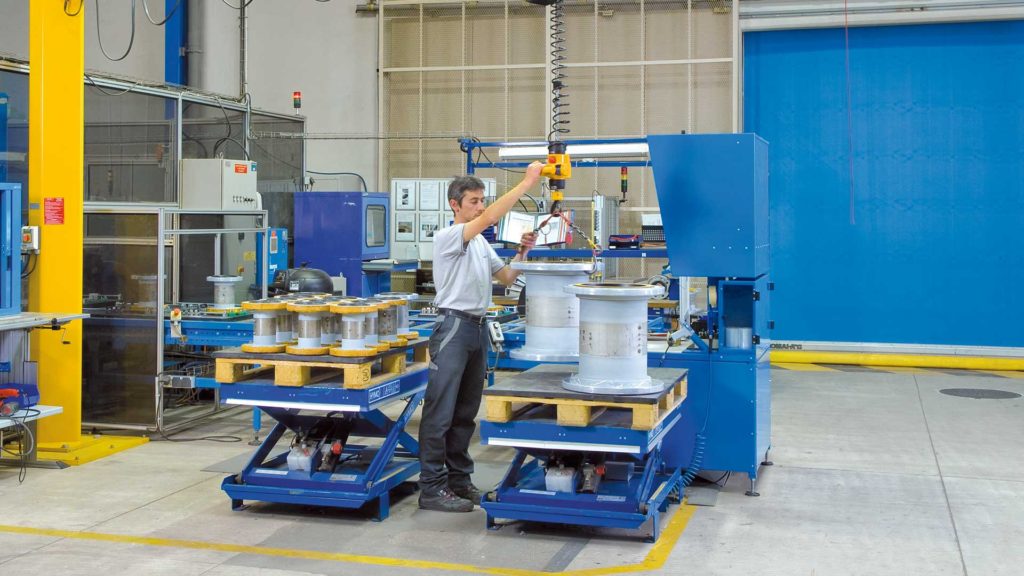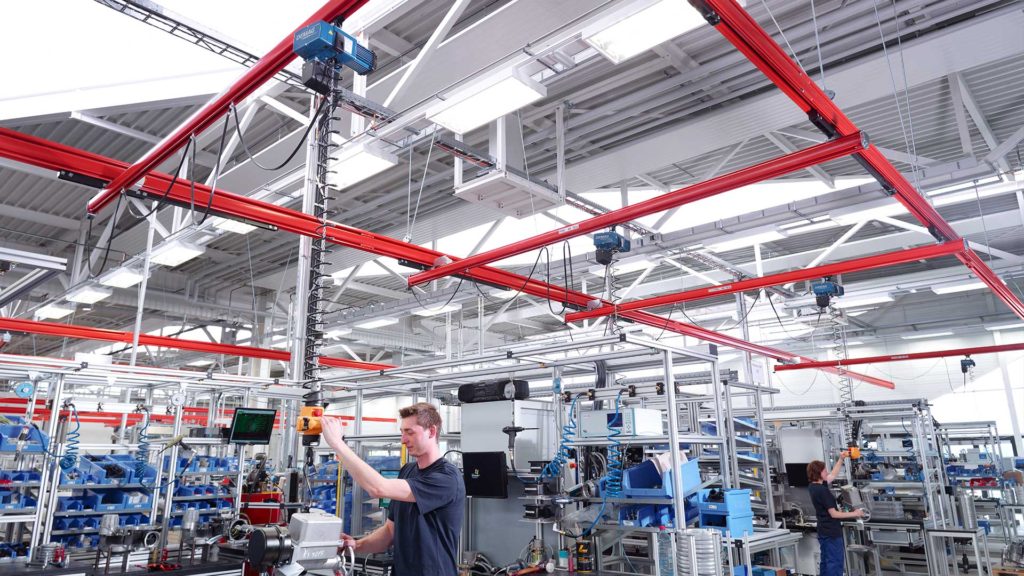Whether you need to move heavy components and products inside the assembly area or in the warehouse in preparation for shipment to customers, safety of your workforce is critical. Making the work more ergonomic helps prevent musculoskeletal disorders (MSDs) like sprains and strains of the back, shoulders and upper limbs. Here in the United States, OSHA provides guidelines on how to mitigate these, and other risks, in the workplace.
Studies show, effective ergonomic interventions can lower the physical demands of manual material handling. In the material handling space, there are many solutions to help mitigate tasks with awkward postures, repetitive movements, pressure points, and static postures. OSHA has identified many potential hazards when it comes to manual material handling. One hazard to consider is the repeated bending at the waist by the employee. This paired with a heavy or awkward load can become another potential hazard of MSDs. Luckily, there are ways to mitigate these potential hazards that can meet your company’s unique needs.
Raise the product or pallet off the floor

Raise pallets using height adjustable equipment.
There are many ways to raise products and pallets off the floor to make manual material handling less hazardous. Raising products and pallets allow employees to keep the load closer to the torso. In a warehouse, use height adjustable picking equipment so pickers can hold the load closer to the body when loading the lowest layer to minimize bending at the waist. In assembly areas, use a forklift or lift tables to lift the items up, reducing risks in manual material handling.
Use powered equipment to handle products rather than handling them manually

Powered equipment and workstation cranes can help your workforce do their job more ergonomically while being more efficient.
Powered equipment, like hoists, can make moving heavy or awkward items more ergonomic for your workforce. Whether you are packing finished product on a pallet for shipment to customers or loading heavy items for transport within your assembly area, powered equipment can help your workforce do the job ergonomically while being more efficient.
Workstation cranes can assist with lifting and transporting heavier loads. These cranes can be ceiling mounted or freestanding systems and use a chain hoist to do the lifting. The rail used makes moving the load within the area smooth, even when moving the load manually. Workstation cranes are paired with hoists, vacuum systems, e-balancers, and other attachments to help eliminate or reduce manual lifting.

Chain hoists do the heavy lifting while your employees guide the loads into place.
There are many types of chain hoists out there to help with lifting. When you need to load products or components onto pallets or benches, look for a hoist that compliments the manual lifting process. These types of hoists do the heavy lifting while the employee guides the load into place. These hoists have flexible attachments specially designed for gripping different types of loads. For example, use pantograph tongs to grip square or round loads. If you have a unique need, a customized grippers can be designed.
Education

Train your workforce on proper ergonomics and safety.
Knowledge is power and educating your workforce on proper ergonomics is essential. Manual handling of items may cause cumulative disorders due to gradual and cumulative deterioration of the musculoskeletal system. Along with measures taken to prevent these types of injuries (like those mentioned above), education on proper lifting techniques and work area safety are important. Consult organizations like OSHA and find safety courses in your area to give your workforce the knowledge they need.
Finding ways to make lifting ergonomic is essential. Raise the bar in your manual material handling processes when employees are handling products or components in assembly line or shipping areas. Using powered equipment like hoists to assist with or replace the manual lifting process helps mitigate risks in tasks with awkward postures, repetitive movements, pressure points, and static postures. Check out the resources below and, don’t forget, knowledge is power. Consult agencies like OSHA and look for training in your area so employees can be proactive.
Resources used in this article:
